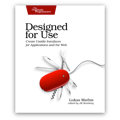Finally, Turn Off That Surface Home Button
Right now, the Surface Pro 3 is probably my favorite computing device.1 It’s the right size for a tablet. Small and light enough to be very portable, but sporting a screen that is big and high-res enough for working, drawing, or watching movies. The aspect ratio is just right: it’s perfect for comic books, wide enough for movies, but still tall enough for productivity apps.
The battery usually lasts through a day, the device has a fantastic pressure-sensitive pen, it’s fast enough for most gaming needs, and the kickstand is pure genius. The keyboard cover is fantastic, and can easily be removed to turn the Surface into a «real» tablet. It’s also quiet and looks good. The Metro apps work perfectly on the touchscreen, but if needed, the Surface also runs regular Windows apps. It’s open, so there’s nobody intentionally scaring developers into not creating innovative new apps for it.
In short, I love using my Surface Pro 3. This is what the iPad should have been, and what the iPad needs to become, if Apple wants to reverse its sales trend: a tablet that’s more than just a big phone without the phone parts.
The only major issue I still had with my Surface was its Home button, which is positioned exactly where you put your palm when drawing, and which triggers on touch, because it’s a capacitive button.
Well, this morning, I had an email from Bardi Golriz in my inbox, with a link to the Surface Hub app.
Install it on your Surface, launch it, and you get this setting:

Yep, it’s finally possible to turn off the Home button. Weirdly, the button still vibrates when touched, but at least it doesn’t actually do anything anymore.
Thanks, Microsoft! Next time, put in a real button.
Proving the old adage that Microsoft requires three attempts to get anything right. 
If you require a short url to link to this article, please use http://ignco.de/649

If you liked this, you'll love my book. It's called Designed for Use: Create Usable Interfaces for Applications and the Web. In it, I cover the whole design process, from user research and sketching to usability tests and A/B testing. But I don't just explain techniques, I also talk about concepts like discoverability, when and how to use animations, what we can learn from video games, and much more.
You can find out more about it (and order it directly, printed or as a DRM-free ebook) on the Pragmatic Programmers website. It's been translated to Chinese and Japanese.
Lukas Mathis's Blog
- Lukas Mathis's profile
- 2 followers



